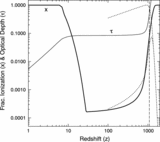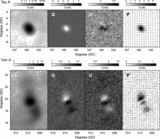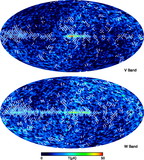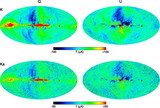Image Details
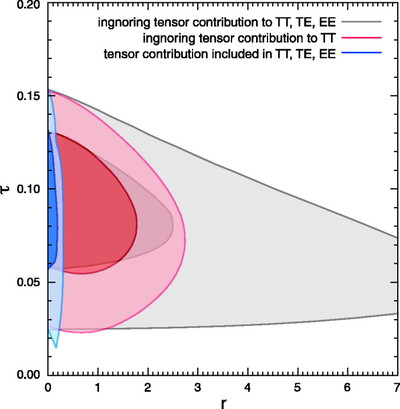
Caption: Fig. 27.
Two‐dimensional likelihood as a function of ﹩\tilde{\tau }﹩ and ﹩\tilde{r}﹩ for the BB spectrum. The contours indicate 1 σ and 2 σ. The ﹩n_{s}﹩ parameter, which is degenerate with τ and r, has been set at ﹩n_{s}=0.96﹩. For the lightest contours, the tensor contribution to TT, TE, and EE is ignored. Because τ is fully degenerate with r when the data are restricted to just BB, the limit is poor. The orange contours show the result when the TE and EE contributions are included, breaking the ﹩r-\tau ﹩ degeneracy. The bluish contours show the result of including all data. The limit on r is more restrictive than in Spergel et al. (2007) because ﹩n_{s}﹩ is fixed. When we marginalize over ﹩\tilde{\tau }﹩, the 95% upper limits on ﹩\tilde{r}﹩ are 4.5, 2.2, and 0.27 for the three cases, respectively. The plot shows that WMAP’s ability to constrain r does not yet come from the BB data. The plot also shows that WMAP’s ability to limit r depends critically on τ.
Copyright and Terms & Conditions
© 2007. The American Astronomical Society. All rights reserved. Printed in U.S.A.


